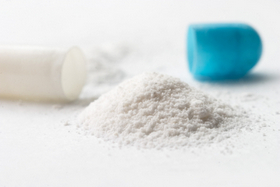Coding Substance Use, Abuse, and Dependence | Part 2
Posted on 03.25.2015

This is Part 2 of our series on the differences between ICD-9 and ICD-10 in coding substance use, abuse, and dependence.
Codes for Psychoactive Substance Use/Abuse/Dependence
ICD-10 contains new codes for use and/or abuse and/or dependence of some psychoactive substances. The availability of use, abuse, and dependence codes within the code set varies depending on the substance being reported.
Code options vary by substance as follows:
Tobacco (Nicotine)
ICD-9 reports a patient’s use of tobacco, no matter how it’s categorized (use, abuse, dependence), under code 305.1 (Tobacco Use Disorder). In relation to tobacco, ICD-9 has one additional code for a history of tobacco use (V15.82).
In comparison, ICD -10 provides greater specificity in the following ways:
Use vs. dependence: Tobacco use and nicotine dependence are reported with separate codes.
- Tobacco use is reported with code Z72.0 (from chapter 21 of ICD-10)
- Dependence on tobacco is reported with a code from category F17 (Nicotine Dependence).
Individual code category: Chapter 5 of ICD-10 has a code category specifically for Nicotine dependence (F17), as opposed to ICD-9 which lumps the all inclusive “Tobacco Use Disorder” code along with abuse of alcohol and other substances under code category 305 (Nondependent Use of Drugs).
Distinction by product: Category F17 is divided into 4 subcategories with distinctions by type of tobacco product:
- Cigarettes
- Chewing tobacco
- Other specified products
- Unspecified
Combination codes: These will be discussed in part 3 of this series. Check back next month!
The ICD-10 Alphabetic index has no sub-term for tobacco (nicotine) under the main term abuse.
Alcohol
ICD-9 has no code available to report the fact that a patient consumes alcohol when the pattern of consumption is not specified as either abuse or dependence. Abuse is reported with code 305.0x (Alcohol Abuse). Consumption documented as dependence is reported with codes 303.0x or 303.9x depending on whether acute intoxication is present. A fifth digit must be assigned to codes from categories 303 and 305 to indicate the pattern of consumption (i.e., unspecified, continuous, episodic, or in remission).
In comparison, ICD -10 provides greater specificity in the following ways:
New codes for alcohol use, unspecified: Patterns of alcohol consumption not specified as either abuse or dependence are reportable in ICD-10. “Alcohol use, unspecified” is reported with codes from category F10 Alcohol Related Disorders
Individual code category: Chapter 5 of ICD-10 has a code category specifically for alcohol related disorders (F10) as opposed to ICD-9 where alcohol abuse is categorized along with abuse of other substances and tobacco use under code category 305 (Nondependent Use of Drugs).
Combination codes: These will be discussed in part 3 of this series.
Codes for Psychoactive Substances Other Than Tobacco or Alcohol
ICD-9 has no codes available to report the fact that a patient uses psychoactive substances such as hallucinogens or cannabis when the pattern of consumption is not specified as either abuse or dependence. ICD-9 includes codes for dependence on all psychoactive substances, other than alcohol/tobacco, under code category 304 (Drug Dependence) and abuse of all of all psychoactive substances under code category 305 (Nondependent Abuse of Drugs). Codes are differentiated by substance and pattern of use (unspecified, continuous, episodic, or in remission).
In comparison, ICD -10 provides greater specificity in the following ways:
New codes for psychoactive substance use, unspecified: Patterns of psychoactive substance use not specified as either abuse or dependence are reportable in ICD-10. “Psychoactive substance use, unspecified” is reported with codes from categories F11-F16 and F18-F19 depending on the substance used.
Individual code category: Chapter 5 of ICD-10 has code categories specifically for disorders related to use of psychoactive substances other than tobacco and alcohol (F11-F16 and F18-F19). The codes in these categories report disorders related to use of a single specific substance (e.g., cocaine, opioids).
Combination Codes: These will be discussed in part 3 of this series.
Codes for Non-psychoactive Substances
Chapter 5 of ICD-10 only has codes to report abuse in relation to non-psychoactive substances (i.e., laxatives, hormones, vitamins, steroids, antacids, herbal or folk remedies). There are no codes for dependence. Use of these substances that is documented as harmful is coded as abuse.
The table below summarizes the available codes types in ICD-9 vs. ICD-10 by substance.
* This change is due to a separation of substances into different code categories in ICD-10-CM which are combined under the same code in ICD-9-CM (e.g., laxatives and inhalants).
Get comprehensive training in ICD-10 with CareerStep’s medical billing and coding online courses. Request more information now!
